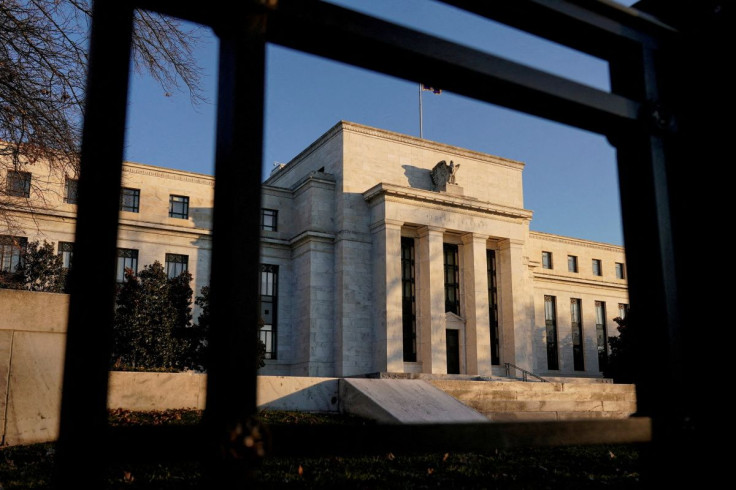Wall Street Jumps As S&P Snaps 3-day Slump; Fed On Tap

U.S. stocks rallied on Tuesday and the S&P 500 ended a 3-day skid as another drop in oil prices and a softer-than-expected reading on producer prices helped ease inflation fears among investors, with the focus turning to the Federal Reserve's upcoming policy announcement.
Brent crude settled below $100 a barrel after rocketing higher to more than $139 last week, providing some temporary relief for equity investors that have seen stocks come under pressure this year from surging inflation concerns, uncertainty over the Fed's policy path to tame rising prices and more recently, escalating conflict in Ukraine.
U.S. producer prices increased solidly in February as the cost of goods like gasoline surged, and further gains are in the pipeline following Russia's invasion of Ukraine, which has made crude oil and other commodities more expensive.
Still, the data for the 12 months through February matched expectations predicting a 10% increase in producer prices, while the producer price index for final demand on a monthly basis increased 0.8%, just shy of the 0.9% estimate and lower than the 1.2% increase registered in January.
The market is now fully pricing in a rate hike of at least 25 basis points when the central bank makes its policy statement on Wednesday. Investors will also be closely watching the Fed's projections for the path of rate hikes this year and in coming years to rein in inflation.[IRPR]
Fed Chairman Jerome Powell has recently floated multiple rate hikes this year as the Fed seeks to curb inflation.
"The fact is (PPI) was weaker than the expectation so therefore the idea that Jay Powell is right going 25 basis points seems to be the way the market feels today, that could change tomorrow," said Ken Polcari, managing partner at Kace Capital Advisors in Boca Raton, Florida.
"The market is in a very oversold position, there are still going to be bumpy roads ahead but today could just be one of those snap-back rallies like we saw last week."
The Dow Jones Industrial Average rose 599.1 points, or 1.82%, to 33,544.34, the S&P 500 gained 89.34 points, or 2.14%, to 4,262.45 and the Nasdaq Composite added 367.40 points, or 2.92%, to 12,948.62.
The S&P 500 slumped about 2.4% in the prior three sessions and recently joined the Dow, Nasdaq and Russell 2000 in forming a "death cross" technical pattern, when a short-term moving average crosses below a longer-term moving average, which some investors believe signals more near-term weakness is likely.
Ten of the 11 major S&P sectors advanced, with technology and consumer discretionary stocks leading the way while energy, the sole positive sector on the year, slumped nearly 4% on the day along with crude prices.
Megacap growth stocks gained with Microsoft Corp up 3.87% and Apple up 2.97%, providing the biggest boosts to the S&P 500 and the Nasdaq.
Meanwhile, investors also closely tracked a steep jump in daily COVID-19 infections in China for the possibility of denting global economic growth, and progress in Ukraine-Russia talks to end their weeks-long conflict.
In the latest hint at compromise, Ukrainian President Volodymyr Zelenskiy said Kyiv was prepared to accept security guarantees that stop short of its long-term objective of the NATO alliance membership, which Moscow opposes.
Delta Air Lines Inc gained 8.70% and United Airlines jumped 9.19% after the U.S. carriers raised their current-quarter revenue forecasts, even as they trimmed capacity. The Arca Airline index climbed 5.57%.
Volume on U.S. exchanges was 13.46 billion shares, compared with the 13.78 billion average for the full session over the last 20 trading days.
Advancing issues outnumbered declining ones on the NYSE by a 2.07-to-1 ratio; on Nasdaq, a 1.72-to-1 ratio favored advancers.
The S&P 500 posted 12 new 52-week highs and 8 new lows; the Nasdaq Composite recorded 21 new highs and 386 new lows.
© Copyright Thomson Reuters 2024. All rights reserved.




















